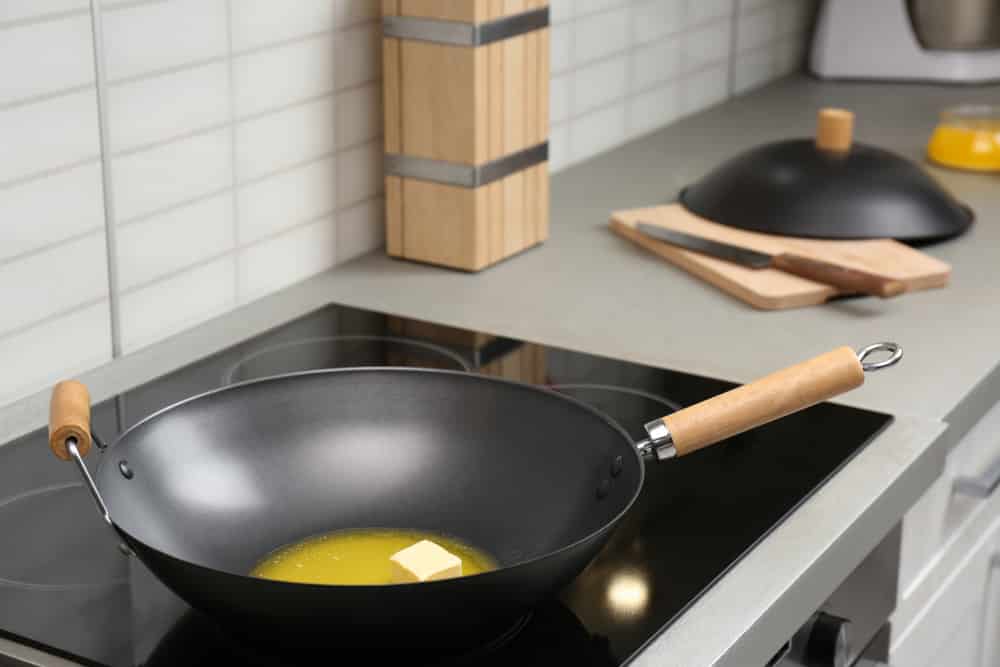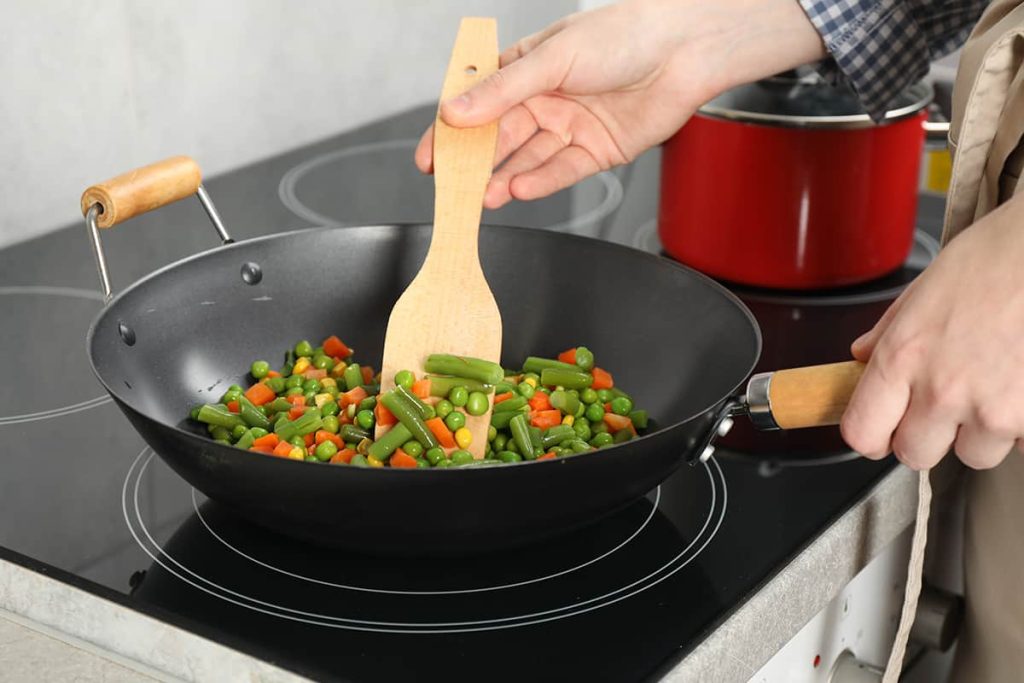Using a Wok on an Electric Stove: Tips and Techniques
I. Introduction
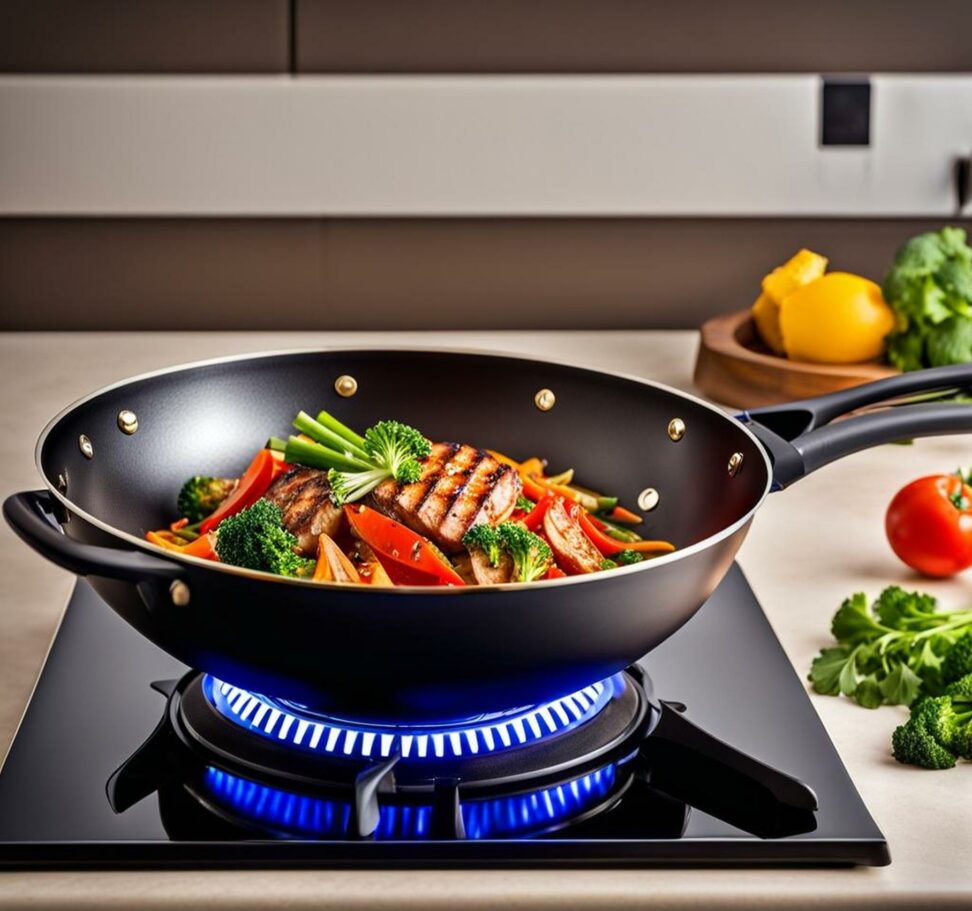
A. Importance of proper cookware for electric stoves Electric stoves have become increasingly popular in households due to their efficiency and safety features. However, using the right cookware on an electric stove is essential to ensure that food is cooked evenly and to prevent damage to both the stove and the cookware. In this blog post, we will discuss the versatility of woks in cooking and how to choose the right wok for an electric stove.
B. The versatility of woks in cooking Woks are incredibly versatile pans that originated in China. They are known for their deep bowl-like shape, sloping sides, and a long handle. Woks are ideal for stir-frying, but they can also be used for boiling, deep frying, steaming, and even smoking food. The unique design of woks allows for optimal heat distribution, making them perfect for cooking on electric stoves.
II. Choosing the Right Wok for an Electric Stove
A. Material considerations
- Carbon steel woks Carbon steel is the most popular material for woks due to its excellent heat conductivity and durability. It heats up quickly and evenly, ensuring your food is cooked to perfection. Carbon steel woks require some maintenance, such as seasoning and proper cleaning, to prevent rusting and maintain their non-stick surface.
- Cast iron woks Cast iron woks are known for their superior heat retention and distribution. They require a longer preheating time but deliver excellent results once heated. However, cast iron woks are quite heavy and may take longer to cool down, which can be a drawback for electric stoves.
- Stainless steel woks Stainless steel woks are durable, non-reactive, and easy to clean. They are a popular choice for those who prefer low maintenance cookware. However, stainless steel is not the best conductor of heat, so it may take longer to heat up and may result in uneven cooking.
B. Size and shape considerations
- Finding the appropriate wok size for electric stoves The size of the wok you choose depends on the size of your electric stove and the amount of food you usually cook. Woks typically range from 10 to 14 inches in diameter. It is important to choose a size that fits comfortably on your stove and allows enough space for stirring and tossing the food.
- Choosing between flat-bottomed and round-bottomed woks Electric stoves require flat-bottomed woks to ensure stability. Round-bottomed woks, which are traditionally used on gas stoves, may not make sufficient contact with the heating element, resulting in uneven cooking. Flat-bottomed woks have a larger surface area, allowing for better heat distribution and more contact with the electric stove’s heating element.
III. Preparing the Wok and Stove
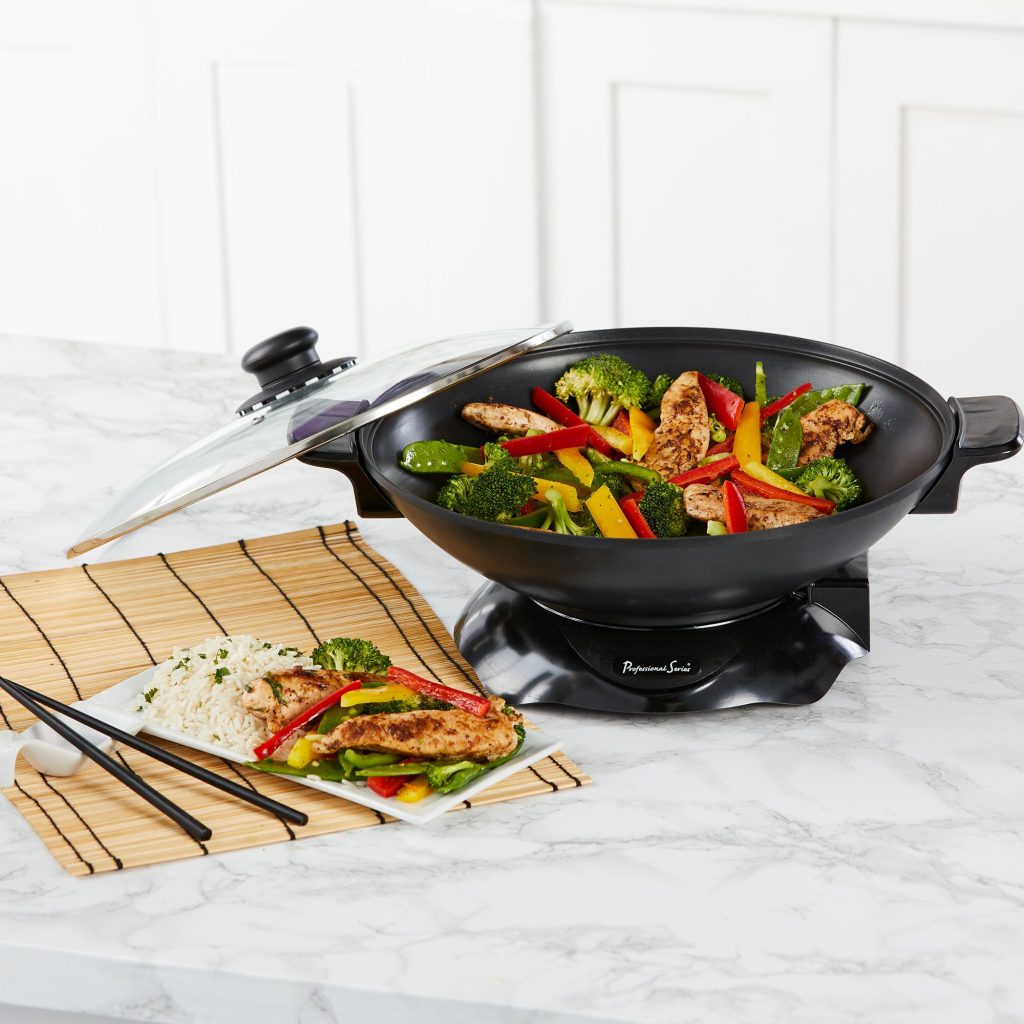
A. Seasoning the wok
- Cleaning and drying the wok Before using a new wok, it is important to wash it with warm, soapy water to remove any manufacturing residues. Rinse it thoroughly and dry it completely to prevent rusting.
- Applying a thin layer of oil to the wok’s surface To create a non-stick coating, apply a small amount of cooking oil evenly to the wok’s surface. Use a paper towel or a brush to spread the oil and ensure it covers the entire cooking surface.
- Heating and cooling the wok to create a non-stick coating Place the oiled wok on the electric stove and heat it over medium-high heat. Allow the oil to smoke and then swirl the wok to coat the sides. Let it cool completely before wiping off any excess oil. Repeat this process 2-3 times to achieve a seasoned, non-stick surface.
B. Adjusting the heat settings on the electric stove
- Understanding the temperature control options Electric stoves usually have temperature control knobs that allow you to adjust the heat settings. Familiarize yourself with the temperature ranges and settings on your specific stove to ensure precise cooking.
- Choosing the appropriate heat level for different cooking techniques Stir-frying typically requires high heat, so set the electric stove to its highest setting. However, for other cooking techniques like simmering or frying, you will need to adjust the heat accordingly. Experiment with different heat levels to find the perfect balance for your specific wok and stove combination.
IV. Cooking Techniques with a Wok on an Electric Stove
A. Stir-frying
Stir-frying is a popular cooking method that allows you to quickly cook ingredients while retaining their textures and flavors. When using a wok on an electric stove for stir-frying, follow these techniques for optimal results:
- Heating the wok properly before adding ingredients
- Preheat the wok on medium to high heat for a few minutes until it becomes hot.
- To check if the wok is ready, flick a few drops of water onto its surface – if it immediately sizzles and evaporates, the wok is heated and ready for cooking.
- Stir-frying in small batches for even cooking
- Add a small amount of oil to the hot wok and swirl it around to coat the surface.
- Add a portion of the ingredients, spreading them out in a single layer.
- Use a spatula or wok turner to continuously toss and flip the ingredients to ensure even cooking and prevent sticking.
- Once the first batch is cooked, remove it from the wok and set it aside. Repeat the process until all the ingredients are cooked.
B. Deep-frying
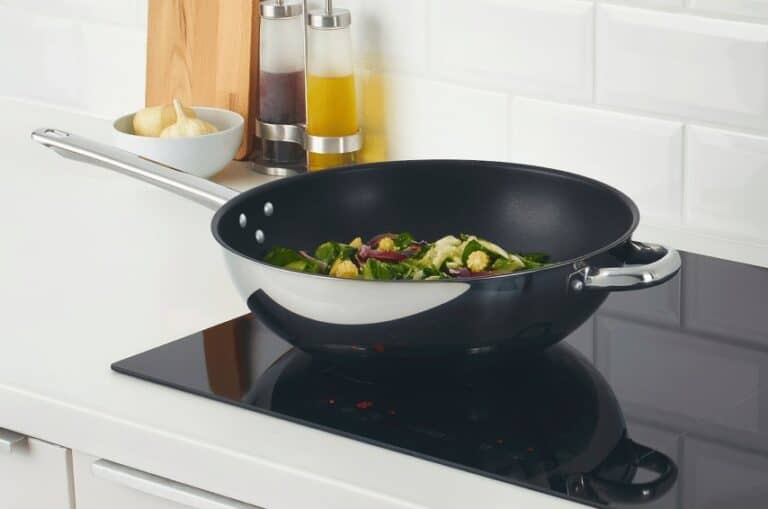
Deep-frying in a wok on an electric stove can be a convenient and effective method. Follow these steps for safe and successful deep-frying:
- Filling the wok with oil to the appropriate level
- Fill the wok with enough oil to fully submerge the food you are frying, but not so much that it overflows when the food is added.
- The oil should be at least 2 to 3 inches deep to ensure even cooking and proper heat distribution.
- Monitoring and maintaining the oil temperature
- Use a clip-on thermometer to monitor the oil temperature throughout the frying process.
- Keep the heat on medium-high to high to maintain a consistent temperature.
- Adjust the heat as needed to keep the temperature within the recommended range for the type of food you are frying.
- Avoid overcrowding the wok with too much food at once, as it can lower the oil temperature and result in greasy and unevenly cooked food.
C. Steaming
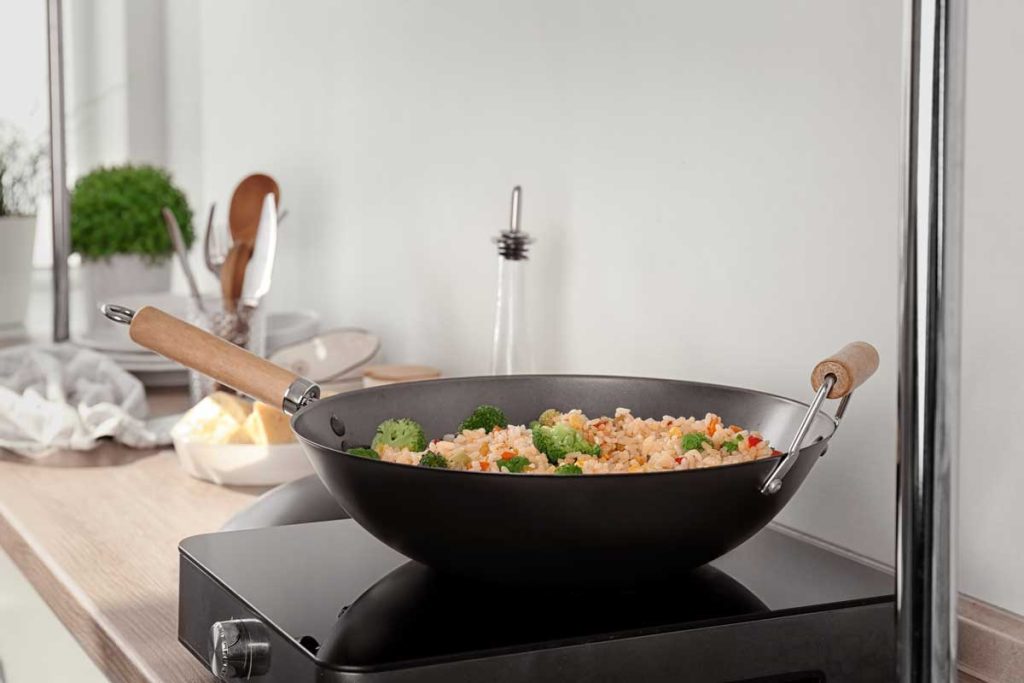
Using a wok for steaming on an electric stove can be a versatile and efficient way to cook a variety of dishes. Follow these steps for successful steaming:
- Using a steamer rack or improvising with a heatproof dish
- If using a steamer rack, place it at the bottom of the wok. Ensure that the rack is elevated above the water level.
- Alternatively, you can use a heatproof dish that fits snugly in the wok. Add water to the wok without submerging the dish.
- Adding water to the wok and bringing it to a simmer
- Add enough water to the wok to create steam, but not so much that it touches the bottom of the steamer rack or heatproof dish.
- Cover the wok with a lid and bring the water to a gentle simmer over medium heat.
- Once the water is simmering, place the ingredients in the steamer rack or dish and cover with a lid.
- Steam the ingredients until they are cooked through, following the recommended cooking times for different foods.
By following these guidelines for choosing the right wok and preparing the wok and electric stove, you can maximize your cooking experience on an electric stove. Stay tuned for the next section of this article, where we will explore various cooking techniques with a wok on an electric stove.
